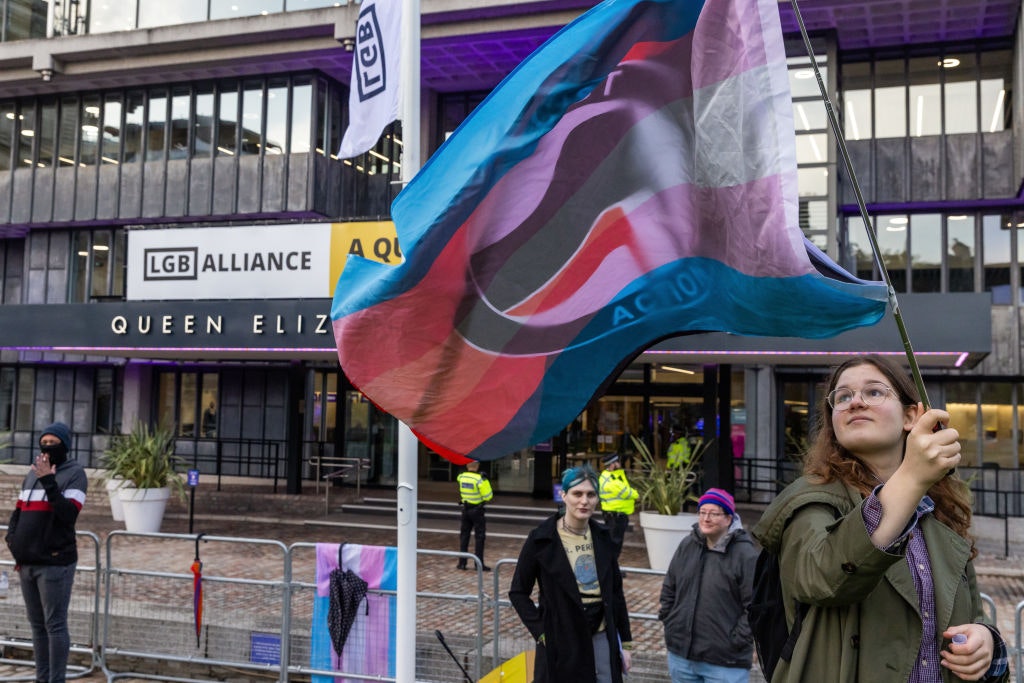City of diamonds
The genius of the Antwerp Six
This article is taken from the May 2023 issue of The Critic. To get the full magazine why not subscribe? Right now we’re offering five issues for just £10.
Don’t look now, but I have experienced my sartorial Nietzsche and the nag moment. I’m not saying I’m a philosophical genius. [Whispers:I am.] However, I have been sickened, dizzied, and moved to sobbing horror by a foray abroad. This epochal event took place not in Turin, but Antwerp, where I had journeyed to supply you with a winning little number on the Antwerp Six and everyone else putting the lux into Benelux.
You know, the Antwerp Six: that posse of designers graduating from the city’s Royal Academy of Fine Arts between 1980-81, who galvanised style across the globe. The Six comprised Dries Van Noten, Ann Demeulemeester, Dirk Van Saene, Walter Van Beirendonck, Dirk Bikkembergs, and Marina Yee.
Their jazz was resplendently avant-garde: conceptual, surreal, flirting with deconstruction
And their jazz was resplendently avant-garde: conceptual, surreal, flirting with deconstruction, obsessed with craft, detail-rich and historically bent, distinguished by collaborations across the arts; savage beauty all about. What the Birmingham Six were to flares and crazed collars, the Antwerp Six were to edgy experimental allure.
In 1986, this collective packed up its kit bags and headed to London’s British Designer Show. Despite being ferreted away upstairs, a Barney’s buyer was blown away by their genius, granting them their first order. Unable to pronounce their names, the press gave them their monicker.
Not only did sixers Van Noten and Demeulemeester become global phenomena, so other Belgians such as Martin Margiela (of Maison Margiela), Raf Simons (of Jil Sander, Dior, Calvin Klein and, currently, Prada), and Saint Laurent’s Anthony Vaccarello conquered the style world.
Over on the high-street, Belgian beauteousness is best represented via the cult label Essential Antwerp. This husband-and-wife brand debuted in 1999 as a fin de siècle rebellion against drear minimalism.
Initially a line of four t-shirts, it became a vastly successful, ready-to-wear outfit available via 46 European stores, plus over 750 global outlets.
It landed in Blighty in 2019. Within days, its Kings Road boutique had become one of the brand’s best performers, second only to its native flagship.
Essentiel Antwerp’s thing is expansive colour and/or pattern, fabulous fabrics and playful proportion, shot through with ease, plus exuberantly off -piste accessories. (Big Bird-yellow fluffy brooches; shoulder-length, electric blue diamante earrings; zebra bags not in faux skin, but sporting dancing beasts — and those are merely the objets I crave.) Behold, serotonin dressing, at a mid-market price, with reassuringly eco credentials. The label’s mission statement declares: “We want to battle boredom,” and amen to that.

The brand’s collaboration with KMSKA, Antwerp’s Royal Museum of Fine Arts, is sublime, not least the items based on Fouquet’s Madonna Surrounded by Seraphim and Cherubim of c.1450 (from £25).
Naturally, I snapped up the crossbody ’phone bag (£85). Why I failed to acquire the corresponding kimono (£205, below) remains a mystery. It is sold out online, but I may yet return to the city to invest.
Meanwhile, the Antwerp Six are very much in vogue, along with shoulders, structure, suiting (which, characteristically perversely, they did in the Nineties rather than the Eighties); basically, all the things that were declared dead and buried thanks to Covid. At the same time, violent colour has never been more explosively modish.
And, yet, what did I discover in Antwerp itself? Universal adoption of the same drab leisure drag that pockmarks the rest of the Western world, aka The Quotidian. And it was this that threatened to destroy me.
Essentiel Antwerp’s thing is expansive colour and/or pattern, fabulous fabrics and playful proportion
Worse, a tour of the city’s aggressively didactic vintage scene (“Enjoy your responsibility”) revealed not merely The Quotidian, but The Beyond Fucking Ghastly. I have revelled in pre-loved purchases from the moment I was put in charge of my costuming.
In the Eighties, this meant plush Fifties frockage and wasp-waisted Forties jackets; in the Nineties, sinuous Thirties slip dresses teamed with Twenties cocktail capes. Only now vintage equals the Noughties, meaning it is fast-fashion that is being rehashed.
All hail, the polyester supremacy. The results go beyond Normcore to become Turdcore. I was reminded of the incident in Douglas Coupland’s J-Pod where the hero inadvertently trades wardrobes with a group of illegal immigrants being people-smuggled.
His “cheesecloth-thin knit shirts too flimsy to buff a car with” are interpreted as a breaking trend and embraced by his hipster colleagues.
The shop-by-weight Melting Pot Kilo even sits next to the Dries flagship, as if to swallow up its baroque beauty in the banal. The Quotidian, man, it’s coming for you. The solution: get thee to Essentiel Antwerp, if not to ’twerp itself, and festoon yourself in cherubim and seraphim.
Enjoying The Critic online? It's even better in print
Try five issues of Britain’s most civilised magazine for £10
Subscribe














